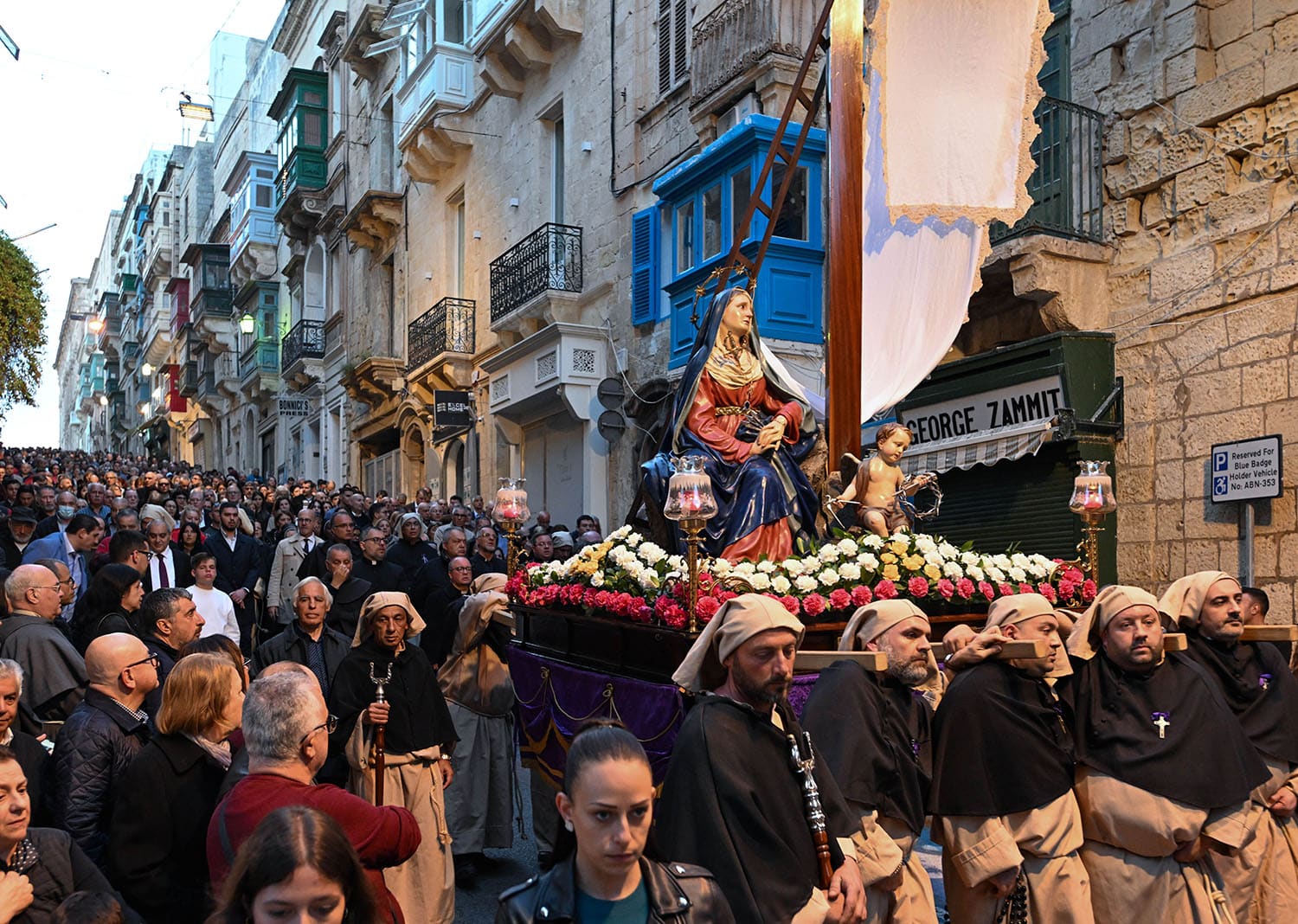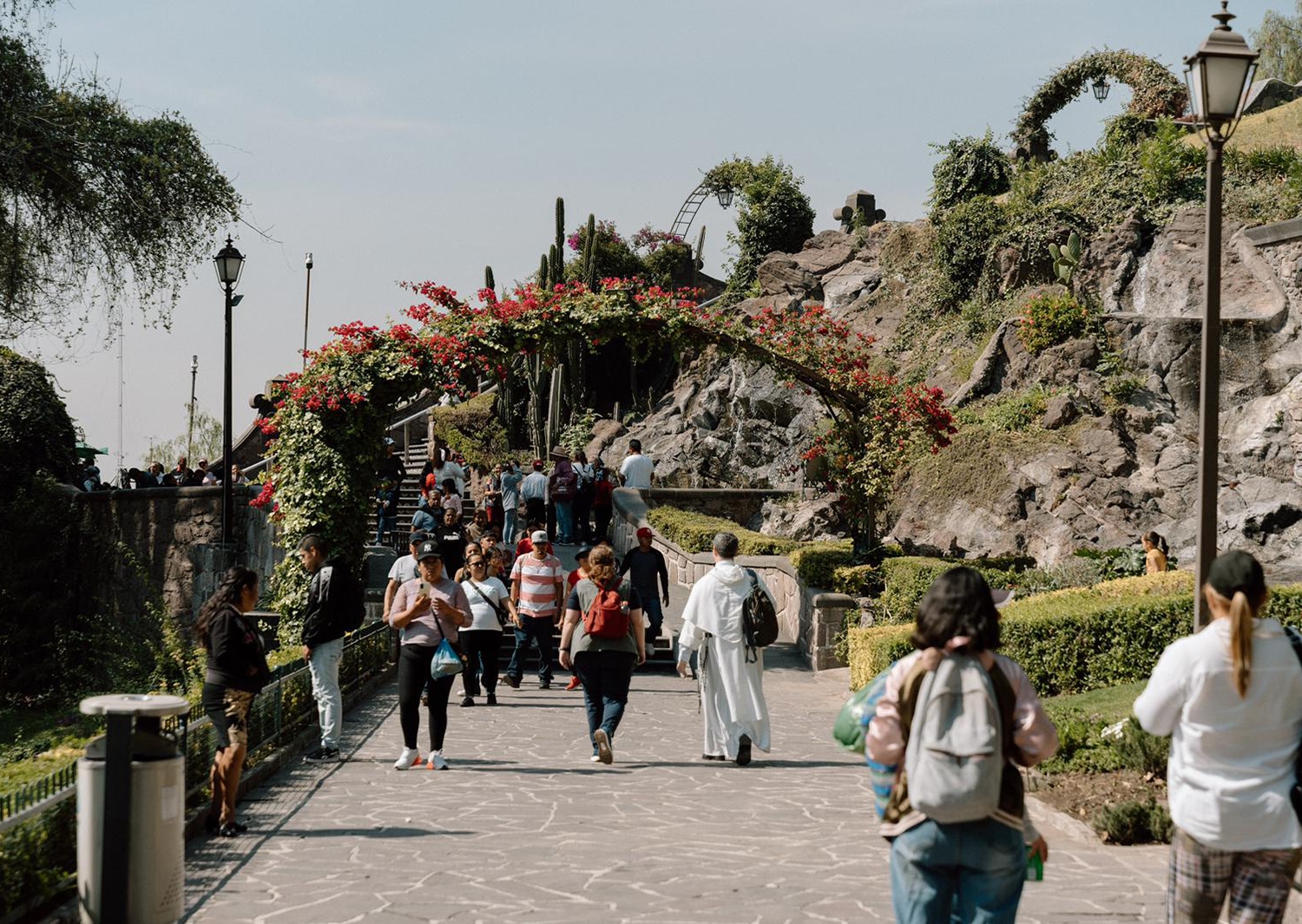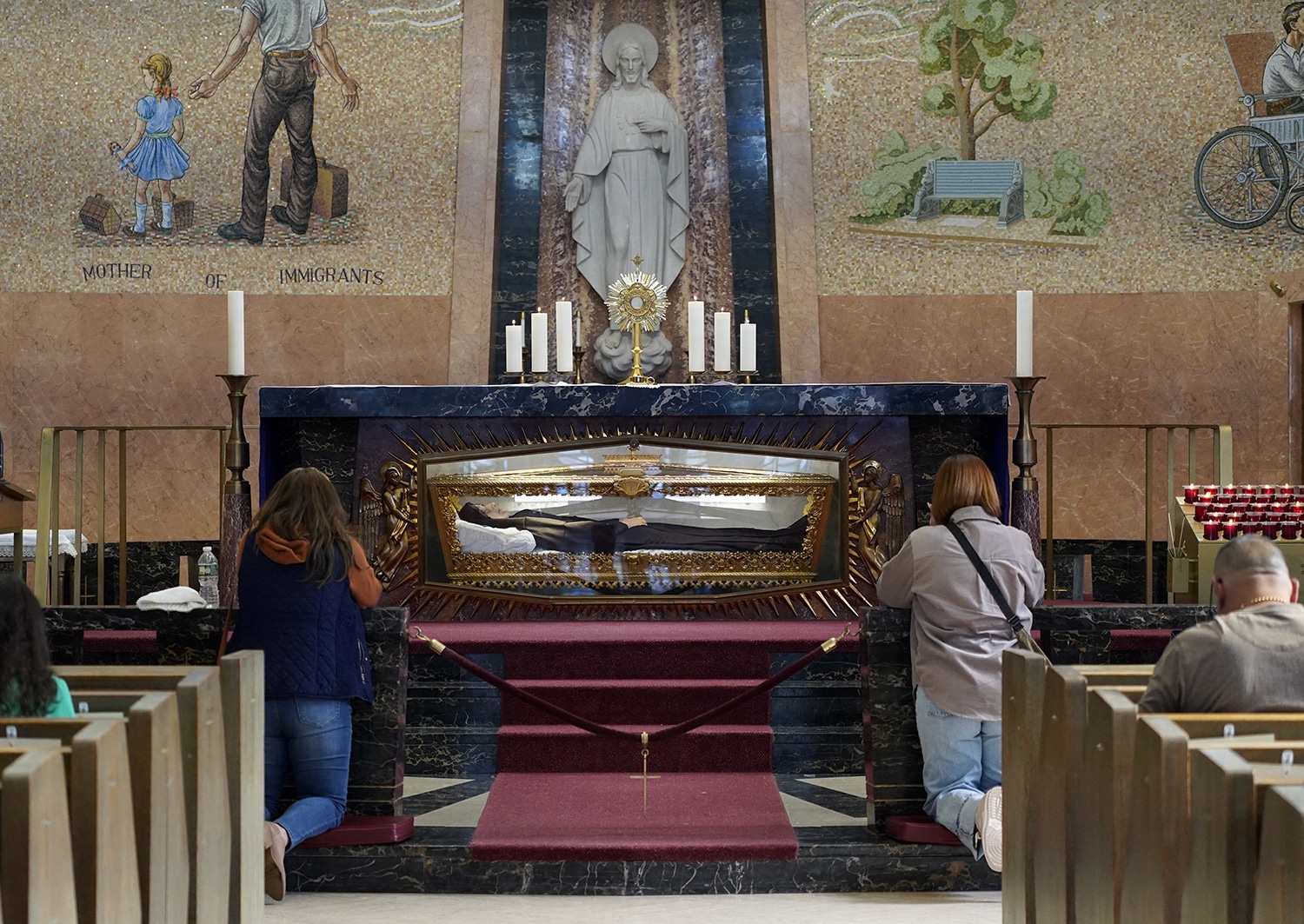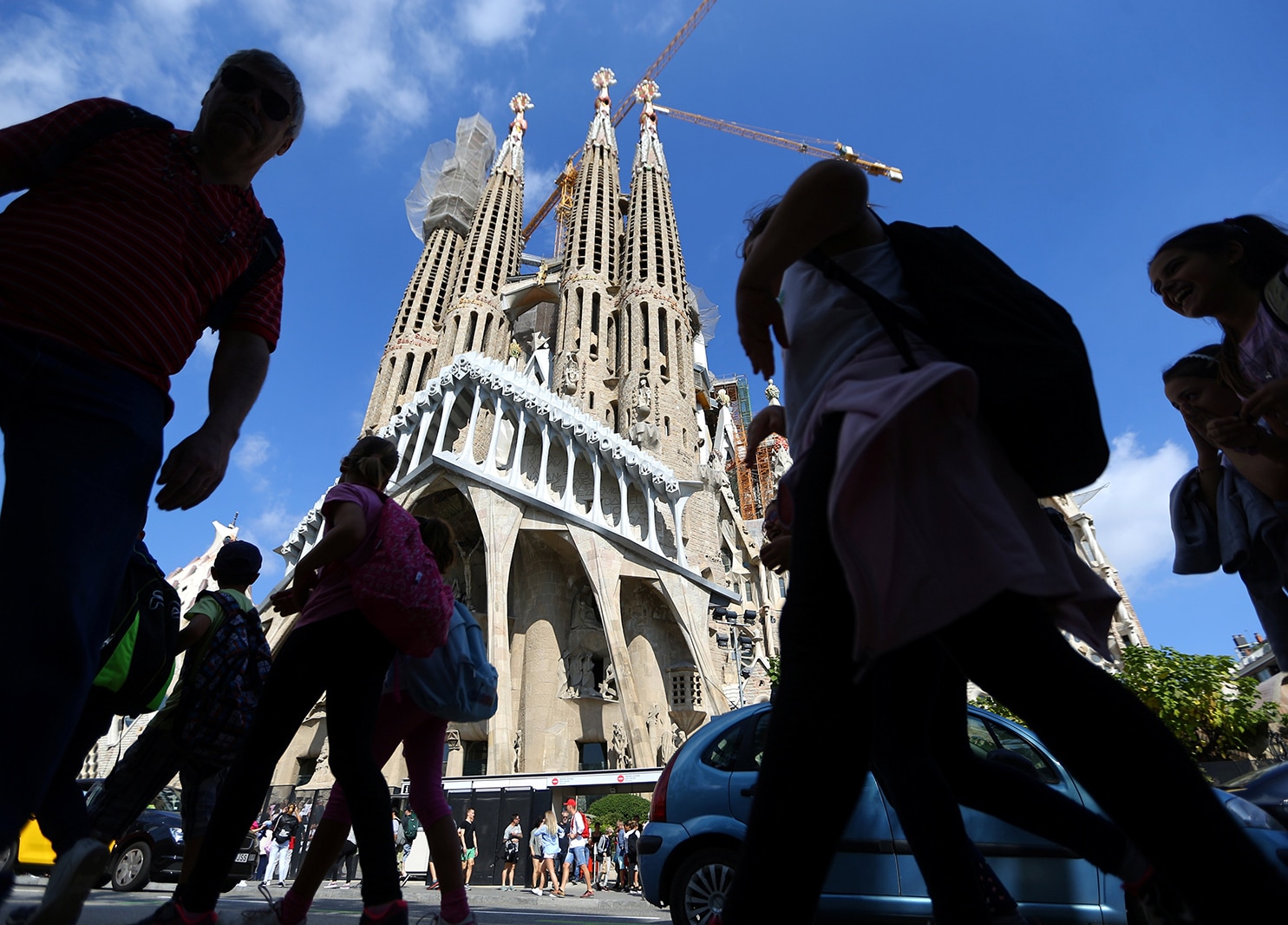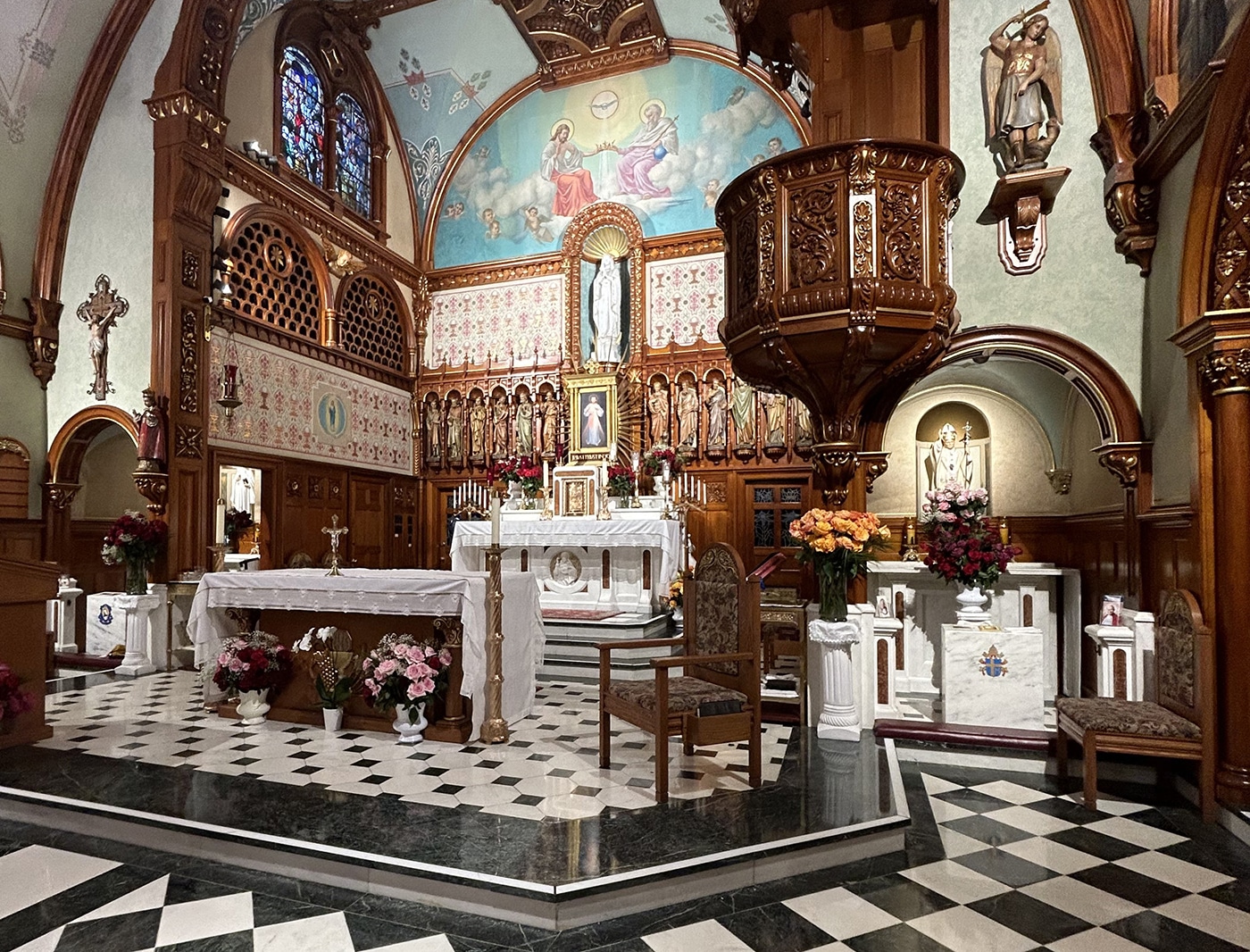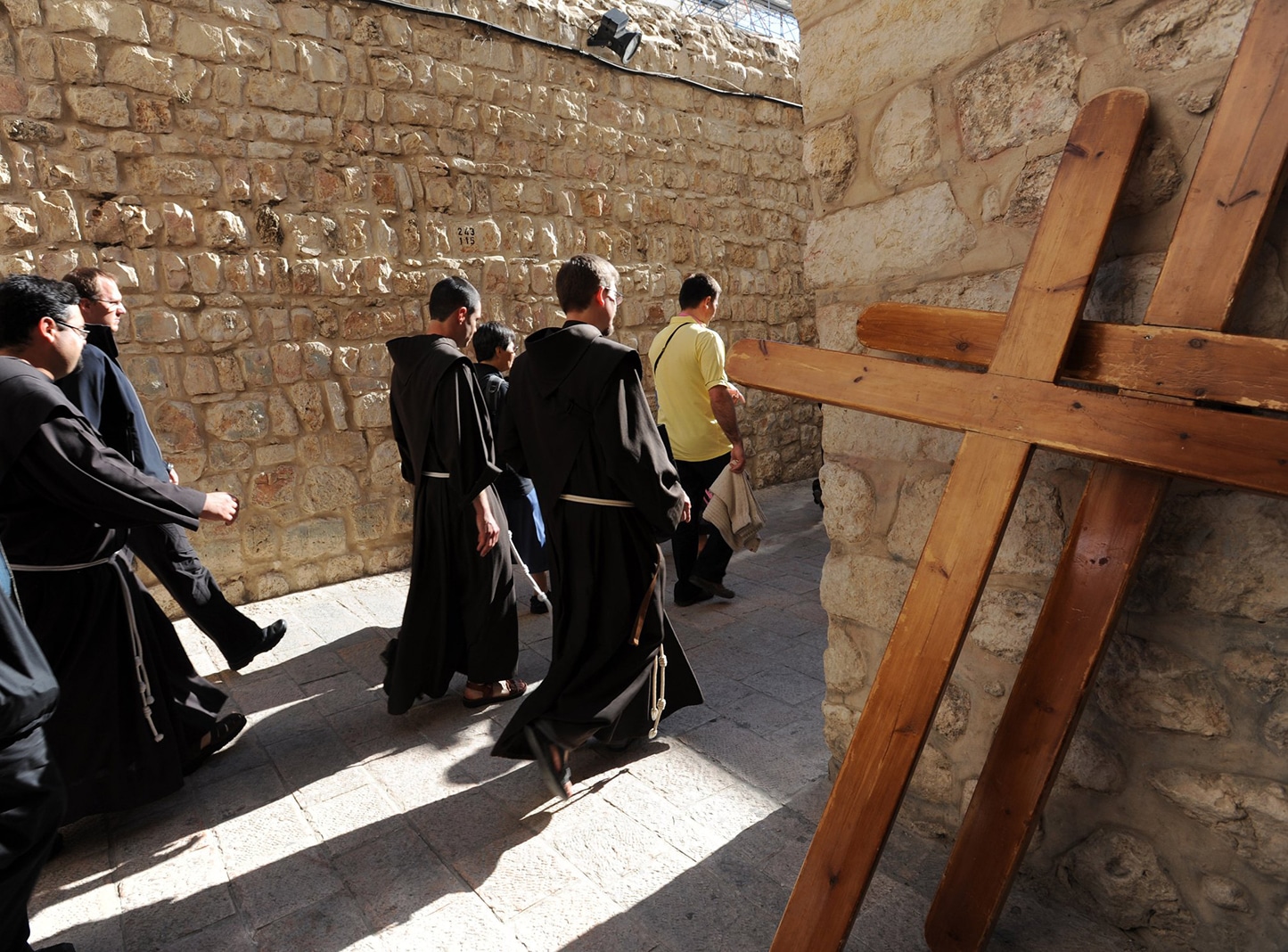Malta is one of the best places to visit during Easter. There, you can be a participant — not just a spectator. Every parish organizes events according to local customs, and visitors take part in ancient traditions — some of them as old as Christianity itself.
In the Maltese Islands, Lenten sermons are held in all parishes over several days. Statues depicting scenes from the Passion are venerated in most churches. These statues are at the core of Malta’s artistic, religious and cultural heritage. The traditional Via Sagra invites the faithful to meditate at the fourteen Stations of the Cross. During this period, youth clubs prepare themselves for the town’s Passion play.
Mater Dolorosa
In most of the Christian world, Holy Week starts on Palm Sunday. However, for the Maltese, it begins on Friday of the Mater Dolorosa — the Friday preceding Good Friday. For centuries, this feast has always had a special place in the hearts of the Maltese. All parishes organize processions in her honor. Traditionally, some of the penitents walk barefoot. Women used to walk on their knees, in fulfillment of vows for graces granted. The most popular Our Lady of Sorrows procession is that of the Franciscan Church of Ta’ Ġieżu in Valletta, which was the first to hold this procession in the islands. This church also houses a miraculous crucifix, known as Il-Kurċifiss Mirakuluż Ta’ Ġieżu. The crucifix’s realism is so strong that, when praying before it, the faithful feel mystically transported to Calvary.
Palm Sunday
On Palm Sunday, villages enact the triumphal entrance of Christ into Jerusalem. During this weekend, local theaters produce the Passion drama. One of the oldest traditional Passion plays is held in the crypt of the Basilica of Saint Dominic in Valletta. The representation of the Last Supper table is displayed in most parishes, originating from a centuries-old one held yearly by the Dominicans at the Oratory of the Holy Sacrament in Valletta. The food is donated to the poor and needy of the parish.
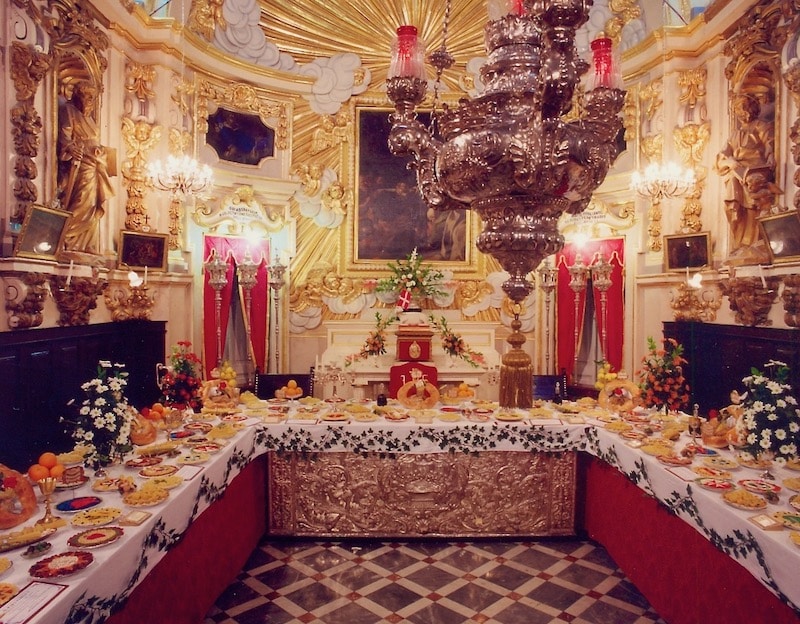
Holy Week
The rites of the Holy Week in Malta are quite elaborate. Maundy Thursday, Good Friday and Easter Sunday are colorful and devout celebrations. People decorate ground floor windows with miniature statues and draperies, creating shrines of the Crucifixion. Illuminated crosses are displayed on balconies. Streets are adorned with flags. Holy Thursday begins with the Mass of Chrism at Saint John the Baptist’s Co-Cathedral, during which fragrant oil is blessed.
Flowered sepulchres are prepared for Maundy Thursday’s rites. In all churches, the traditional washing of the feet is practiced. The interiors of the churches are covered with black damasks. In the evening, the In Cena Domini is celebrated. Parish priests, including the archbishop, wash the feet of twelve men and women representing the Apostles. This is the origin of the traditional “Bread of the Apostles,” a ring-shaped bread topped with seeds and nuts.
After the Cena Domini, the consecrated hosts to be used on Good Friday are brought in procession to the sepulchre, a tabernacle that the faithful worship in their visits to seven altars of repose — preferably in seven different churches. On Thursday night (and Good Friday morning) thousands turn out for the seven visits. All sepulchres and altars are decorated with white flowers and a whitish seed-plant called “gulbiena,” which grows in the dark, reminiscent of Christ’s rising from darkness.
During Good Friday, the streets of Malta become a massive stage. Several parishes commemorate the Passion through spectacular processions. Effigies of Jesus Christ pass through narrow roads, followed by various statues, including that of the Mater Dolorosa. The number of participants, including children, is quite impressive: In Żebbuġ’s procession, more than eight hundred persons partake.
Medieval past
In the medieval era, rituals and devotions honoring the Passion of Christ became more prevalent. The Franciscans founded the first archconfraternity in Malta, in Rabat, dedicated to St. Joseph. The exact date of the brotherhood’s foundation is unknown, although the years 1245 and 1345 are mentioned in some documents. Members of this archconfraternity were the first in Malta to commemorate the Passion amongst themselves. From 1591, it became a yearly event. The arrival of the Order of St. John further increased the devotion to the Passion, also bringing relics associated with the Passion, including a piece of the cross of Christ and a thorn from the crown of Our Lord.
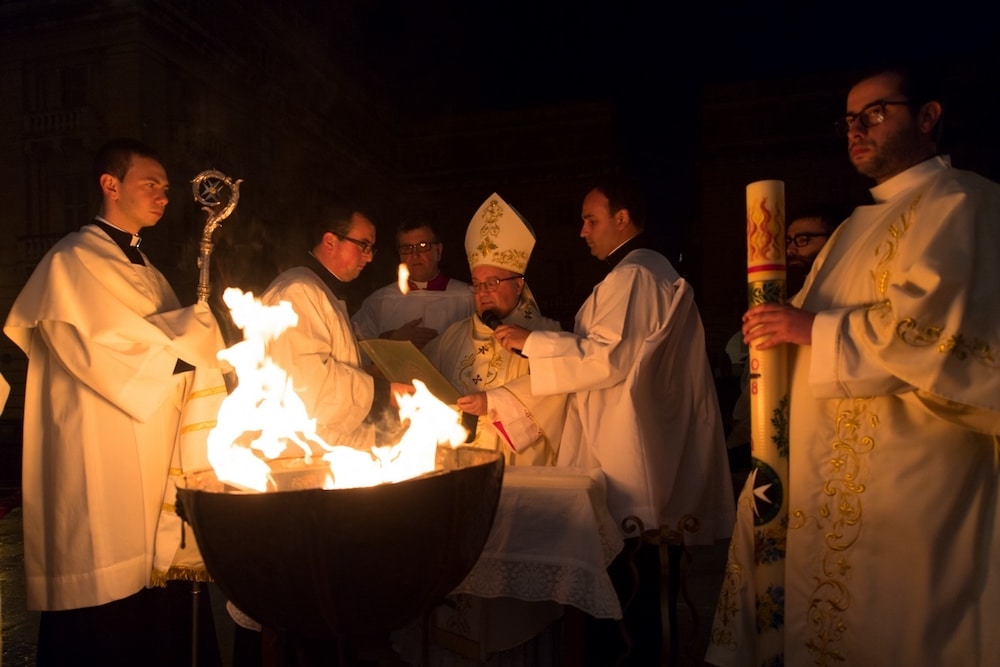
The paschal fire
Holy Saturday is a sober day — at least until the evening. Easter Vigil celebrations start around eight. The faithful gather in front of the church to attend a special function celebrating the resurrection of Christ. At first, they stand in the dark, but when the Gloria is sung, the church is illuminated, starting with candles held by the attendees, lit from the Paschal cero. A fire is ignited outside the church, from which the cero is lit. The Paschal cero represents Christ, the true light that illuminates every man. Its ignition symbolizes the Resurrection. Bells toll in celebration, and the faithful accompany the choir in the Gloria.
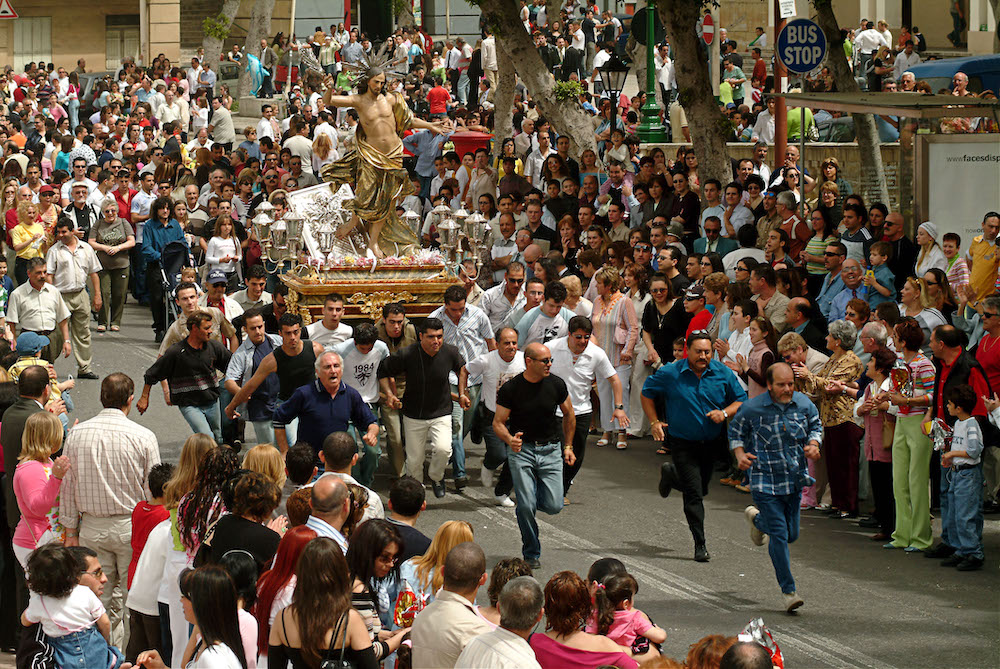
Easter day in Malta is marked by the incessant pealing of church bells and fast-paced processions, with youth running through the streets bearing statues of the Risen Christ (l-Irxoxt). This is the time of commemorating Christ’s victory over death. People go on their balconies to shower confetti and ticker tape on the procession. Children follow it carrying the figolla, a typical Maltese traditional dessert made with almonds and covered with powdered sugar. Traditionally, the figollas are blessed by the parish priest.
Lent and Easter flavors
Malta is known for its food. Lent is no exception. A variety of local dishes are part of Easter traditions. Among these, one finds kusksu (bean soup) and the qagħaq tal-Appostli. The kwareżimal is a very popular dessert: a small cake made of black honey, milk, spices and almonds. Karamelli are traditional sweets made from carobs and honey. Particular fish and vegetable-based dishes are consumed more, particularly on Ash Wednesday and Lenten Fridays. Bread with kunserva (tomato paste), olives and tuna is also very popular. Pastry filled with various waddings (spinach, peas, anchovies, cheese) are known as “qassatat” and “pastizzi.” On Easter, the whole family gathers for lunch, where lamb dishes are served, and figolla is had as dessert.
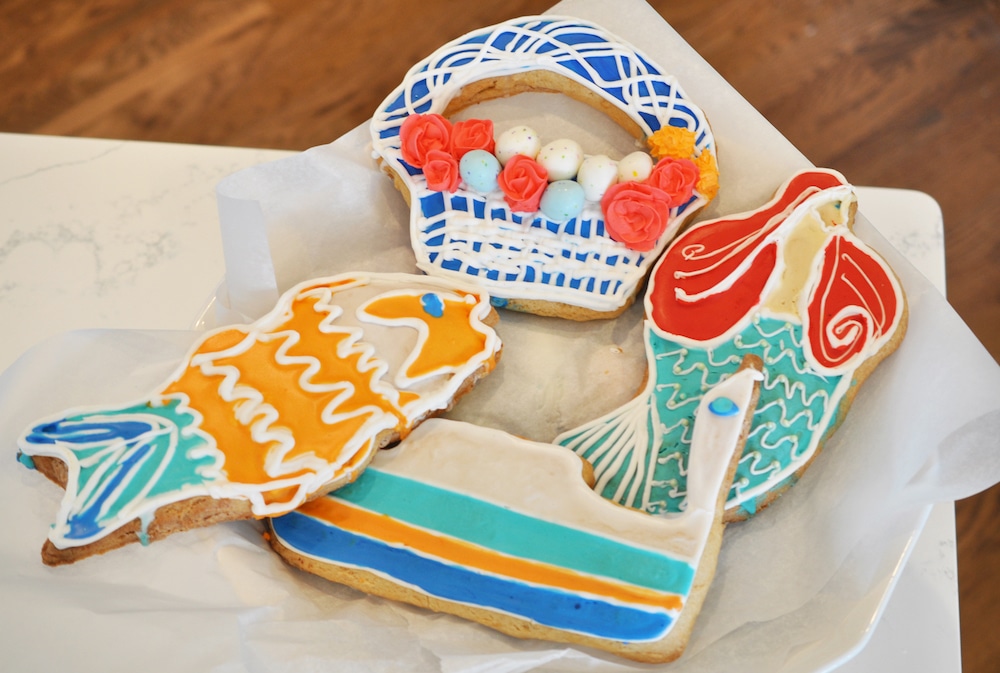
We mentioned some religious traditions of the Maltese Easter. But the real strength of this season is people’s participation in these events — pious and festive. During this period, liturgical moments establish a connection between the living members of the community, and those who prayed before them throughout the centuries.
This content has been brought to you in partnership with the Malta Tourism Authority. Visit their website at mta.com.mt.

